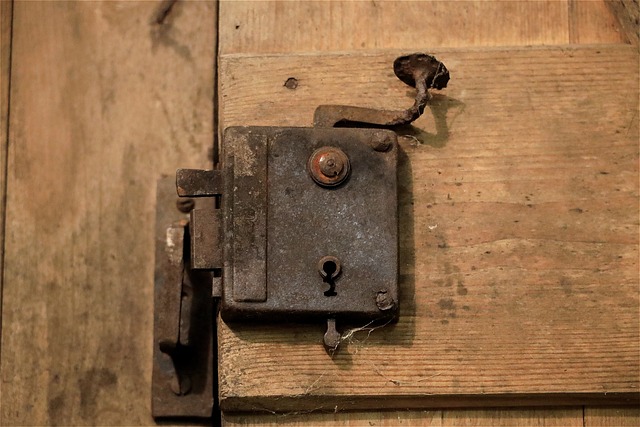Multi-Factor Authentication (MFA) through the integration of hotel key card locks and Personal Identification Numbers (PINs) significantly bolsters security in high-security environments like hotels. This hybrid system combines physical access via key cards with digital authentication via PINs, deterring unauthorized access even if a guest's card is lost or stolen. By centralizing user verification and integrating it with existing access control systems, MFA enhances security oversight while ensuring a convenient guest experience. However, successful implementation involves addressing compatibility issues, managing large-scale deployments, promoting user adoption, and conducting regular risk assessments and audits to maintain robust security measures.
Multi-factor authentication (MFA) enhances security by requiring multiple verification methods. In the context of hotels, combining MFA with key card locks and PINs offers robust protection against unauthorized access. This article explores the benefits of MFA, delves into the role of hotel key card locks as a physical layer of security, and provides insights on integrating PINs for enhanced safety. We also discuss implementation strategies, common challenges, and best practices for MFA solutions featuring key cards and PINs.
Understanding Multi-Factor Authentication (MFA) and Its Benefits
Multi-Factor Authentication (MFA) is a security process that requires multiple forms of verification before granting access to sensitive information or areas, such as those secured by hotel key card locks. Unlike traditional passwords, which rely on something a user knows (like a PIN), MFA incorporates something the user has (like a key card) and/or something the user is (biometric data). This multi-layered approach significantly enhances security, making it much harder for unauthorized individuals to gain access.
The benefits of MFA are considerable, especially in high-security environments like hotels. By adding an extra layer of protection, MFA can deter and frustrate cybercriminals who often use brute force or social engineering tactics to bypass traditional locks. Moreover, even if a criminal obtains a user’s password or key card, they still need access to the second factor, such as a fingerprint or security code, to gain entry. This additional hurdle significantly increases the time and resources needed for unauthorized access, providing valuable time for potential security breaches to be detected and addressed.
Hotel Key Card Locks: A Physical Layer for Security
Hotel key card locks are a physical layer of security that has become an integral part of modern hospitality. These innovative systems combine the convenience of key cards with robust authentication mechanisms, ensuring only authorized guests access their rooms. By requiring a unique digital code or PIN in addition to the magnetic strip or chip on the key card, hotels can significantly enhance their security protocols.
This dual-factor approach adds an extra layer of protection against unauthorized entry. Even if a guest loses their key card, the PIN acts as a backup, preventing unintended access. Moreover, hotel key card locks can be integrated with existing access control systems, providing central management and real-time monitoring capabilities for enhanced security oversight.
Integrating PINs into MFA for Enhanced Protection
In the realm of multi-factor authentication (MFA), integrating Personal Identification Numbers (PINs) with hotel key card locks offers a robust security solution. This hybrid approach leverages the convenience of key cards while significantly enhancing protection through an additional layer of verification—the PIN. When a guest checks into a hotel, they’re not just handed a key card; they’re also provided with a secure PIN that grants access to their room and personal belongings.
This two-step process ensures that even if a guest’s key card is lost or stolen, unauthorized individuals won’t be able to gain entry as they wouldn’t possess the specific PIN associated with that particular room. Thus, integrating PINs into MFA for hotel key card locks not only adds an extra level of security but also peace of mind for both guests and hotel management.
Implementation, Challenges, and Best Practices for MFA with Key Cards and PINs
Multi-factor authentication (MFA) using key cards and PINs offers enhanced security for access control systems, especially in high-security areas like hotels. Implementation involves integrating key card readers with a centralized access management system that stores user credentials and ensures each access attempt is verified against multiple factors—something the user knows (PIN), and something they have (key card).
Challenges arise from ensuring compatibility between existing hardware and software systems, managing large-scale deployments, and maintaining user adoption. For instance, legacy hotel key card locks might require costly upgrades or replacements to support MFA. Best practices include a comprehensive risk assessment to identify vulnerabilities, regular security audits, and clear communication strategies to educate users on the importance of MFA for their safety and privacy, especially in securing guest rooms and sensitive areas within hotels.
Multi-factor authentication (MFA) using hotel key card locks and PIN codes offers a robust physical security layer for accommodations. By combining the convenience of key cards with the added protection of a personal PIN, hotels can significantly enhance guest safety without compromising accessibility. Implementing MFA with key cards and PINs requires careful planning, addressing potential challenges, and adopting best practices to ensure a seamless and secure experience for both guests and staff. This dual-factor approach is a game-changer in hospitality security, setting new standards for protecting guests’ personal belongings and privacy.
